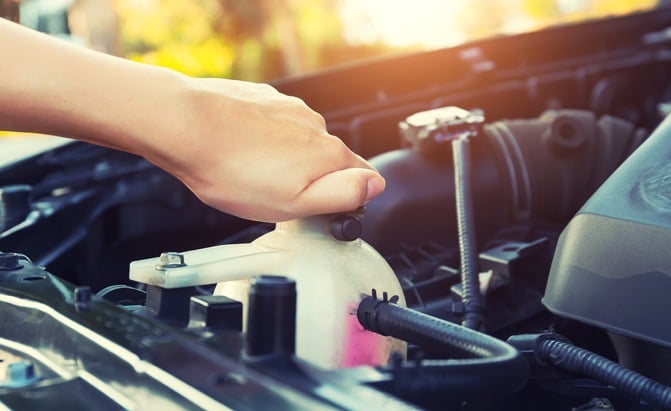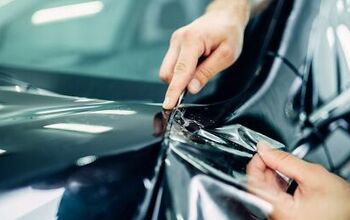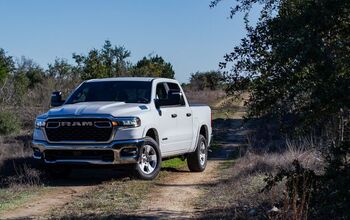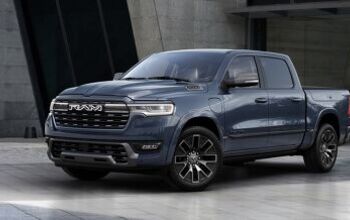The Best Coolants and Antifreezes so You Don't Boil or Freeze Up

Engine coolant plays a vital part in keeping your engine running in top shape (and just running period) and prolonging the life of the engine and its components.
Coolant is a water-based liquid that works to draw heat from your engine. The liquid is circulated into the engine through a hose into gaps or ‘passages’ in the engine block. Once the coolant becomes too hot to effectively cool the engine, it’s drawn back out through a separate hose before passing through the intercooler. As the liquid flows through the intercooler, it’s cooled by the air as your vehicle travels down the road. This circulation process continues as necessary, while your car’s thermostat works to regulate the temperature of the coolant and the engine.
Engine coolants contain antifreeze so they do not become frozen when the outside temperature drops below zero. Other additives in antifreeze include corrosion inhibitors and lubricants. Many coolants contain organic versions of these additives, or a combination of inorganic and organic additives. Coolants with organic additives are referred to as ‘global’ coolants or ‘HOAT’ (hybrid organic acid technology) whereas inorganic additive coolants are referred to as ‘IAT’ (inorganic acid technology).
Some coolants are sold as a ready-to-use solution with a 50:50 mix of water and coolant, whereas others are a coolant concentrate that is intended to be diluted by the user. How much water and coolant you use in the solution is usually included in the instructions on the coolant bottle.
Shopping for engine coolant can be a bit of a tedious task, so in this article, we’re going to simplify the process. We’ll show you some of the best coolants on sale today and provide no-nonsense answers to common questions and concerns people have when shopping for engine coolant.
Table of contents
- 1. Editor's Pick: EVANS Cooling Systems High Performance Waterless Engine Coolant
- 2. Best Budget Option: ProLine Extended Life Antifreeze/Coolant Full Strength
- 3. Best Diesel Option: Zerex G-05 Antifreeze/Coolant
- 4. Recochem OEM Pink Premium Antifreeze Concentrate
- 5. Zerex Original Green Antifreeze/Coolant, Concentrated
- 6. Valvoline MaxLife Universal Antifreeze/Coolant
- 7. ShellZone Pre-Diluted 50/50 Antifreeze/Engine Coolant
- 8. Engine Ice Engine Coolant
- 9. Zerex DEX-COOL Antifreeze/Coolant, Concentrated
- 10. Zerex Heavy Duty Extended Life Antifreeze/Coolant
- What's the Difference Between Coolant Types?
- So How Do I Know Which Coolant is Right for my Vehicle?
- What do the Different Colors Mean?
- What Happens if I Use the Wrong Coolant or Mix Coolants?
- How do I Know When to Change my Coolant?
- Recent Updates:
1. Editor's Pick: EVANS Cooling Systems High Performance Waterless Engine Coolant
EVANS Cooling Systems High Performance Waterless Engine Coolant lands on our top 10 list because it’s water-free. Eliminating water from the coolant equation helps to reduce corrosion, prolonging engine life and potentially saving you money on maintenance or repairs.
An important step in converting your car’s coolant system from a water-based to a water-free coolant is ensuring your vehicle’s cooling system is completely free of water. EVANS also makes a water-free Prep Fluid that flushes water-based coolant from your car and has a how-t0 installation video on YouTube.
This coolant is designed for a variety of engines, from vintage V-8s, to modern-day four-cylinders, to heavy-duty diesels, and many more. It will have to be changed much less frequently than a regular coolant as well, saving you money in the long run.
Pros | Water-free solution prevents rust and corrosion, long lasting |
Cons | Pricey, requires minor installation process |
Bottom Line | Long lasting water-free coolant that can extend the life of your vehicle |
2. Best Budget Option: ProLine Extended Life Antifreeze/Coolant Full Strength
This antifreeze and coolant from ProLine is a concentrated solution that you will have to mix yourself with one part water and one part solution. Sold in a one-gallon format, one bottle will net you two gallons of coolant. This makes this very inexpensive coolant an excellent value proposition and perfect for those who own an economy car or another type of inexpensive vehicle.
This coolant is also appropriate to be mixed with other types of coolant, such as those of different colors and those from different brands.
Pros | Concentrate produces two gallons of coolant, appropriate for many makes and models |
Cons | Not intended for newer vehicles or more expensive vehicles |
Bottom Line | An inexpensive solution that's perfect for a commuter car |
3. Best Diesel Option: Zerex G-05 Antifreeze/Coolant
The Zerex G-05 Antifreeze/Coolant works in both gasoline and diesel vehicles, but contains some additives that will benefit diesel engines in particular.
ZEREX G-05 contains a nitrite based additive that is designed to protect your diesel engine’s cylinder liners from cavitation erosion – a common type of erosion in diesel engines. It also contains other control additives that will protect your engine and radiator from hard water deposits and scale formation.
This is also a hybrid organic acid technology (HOAT) coolant that is legal for use in Europe. It’s also a very affordable type of HOAT coolant, which are typically a bit pricier than traditional coolants with inorganic additives.
Pros | Inexpensive HOAT-type coolant, great for diesel engines |
Cons | May not be ideal for non-diesel engines |
Bottom Line | A reputable, inexpensive coolant that's designed for European diesel engines |
4. Recochem OEM Pink Premium Antifreeze Concentrate
Recochem’s OEM pink antifreeze was designed for Toyota, Lexus, and Scion models, but may work for non-Toyota vehicles as well depending on the vehicle’s cooling requirements.
This organic OAT-certified coolant will last 5 years, or 150,000 miles. It’s sold in 1 gallon concentrate format, so you’ll get 2 gallons of coolant out of it. While not as cheap as some other coolants, this is an affordable aftermarket coolant that you know will work perfectly with any Toyota, Lexus, or Scion.
Pros | Great for Toyota, Lexus, and Scion vehicles, OAT-certified organic coolant |
Cons | Will only work on limited number of makes and models |
Bottom Line | Own a Toyota, Lexus or Scion? This is the antifreeze for you! |
5. Zerex Original Green Antifreeze/Coolant, Concentrated
This well-known coolant from Zerex is perfect if your vehicle still uses the inorganic additive, green-colored coolant. If your vehicle was built in the 1990s or the early 2000s, it may use the green colored coolant.
A tried and true formula ensures your engine will stay cool and that critical componentry won’t rust. This antifreeze coolant is proven at temperatures of -34 degrees fahrenheit and is appropriate for use in almost all vehicle makes and models.
While not of the organic additive HOAT variety, this coolant is still the preferred choice those who drive older vehicles and vintage and classic car owners.
Pros | Tried and true formula, inexpensive |
Cons | No organic additives, not appropriate for newer vehicles |
Bottom Line | Perfect if you own an older vehicle or a classic/vintage car—the last of a dying breed! |
6. Valvoline MaxLife Universal Antifreeze/Coolant
The Valvoline MaxLife Universal Antifreeze/Coolant is a perfect coolant for high-mileage vehicles. With a reputable manufacturer behind this coolant, you can buy this coolant with confidence that it will perform as a high-end coolant should.
This antifreeze coolant contains “Alugard Plus,” which is an additive that helps to protect against corrosion. It also contains lubricants for the gaskets and engine seals. It’s appropriate for all makes and models as well.
Pros | Reputable brand, good for high mileage vehicles, inexpensive |
Cons | Not ideal for newer, low mileage vehicles |
Bottom Line | A solid antifreeze engine coolant from a reputable brand |
7. ShellZone Pre-Diluted 50/50 Antifreeze/Engine Coolant
This engine coolant is from Shell (yes, the gas station) and is specially formulated to reduce corrosion and rust.
The 50:50, premixed antifreeze/water solution ensures you won’t get your mixture wrong and is easy to use on the go. It’s also very inexpensive, making it perfect if you own multiple vehicles or find yourself topping up your coolant frequently. It’s compatible with many makes and models.
Pros | Reputable brand, prevents corrosion, inexpensive |
Cons | May not be appropriate for all makes and models |
Bottom Line | A solid, inexpensive coolant from a reputable brand |
8. Engine Ice Engine Coolant
If you live in areas that are prone to extreme temperatures, this high-efficiency coolant is just what you need. This non-toxic, phosphate-free antifreeze has a more robust profile than other options on the market, and we feel that it has revolutionized the coolant industry. This coolant features a PG (propylene glycol) foundation, which isn't as toxic as ethylene glycol, and it is biodegradable as it contains no phosphate.
You can use it right of the can without any mixing, as it is sold pre-mixed with corrosion-resistant, de-ionized water. The chemical formula ensures that it doesn't leave behind scale or mineral deposits in the radiator or the rest of the system. Boilover protection is up to 256-degrees Fahrenheit while freeze protection is for up to negative 26-degrees Fahrenheit. This configuration makes the Engine Ice TYDS008-03 perfect for ATVs, motorbikes, snow machines, and desert vehicles, etc.
Furthermore, it has ASRA and CCS permissions for letting engines perform at their full potential, making it an ideal choice for vehicles on race tracks. Remember to flush the engine if you are shifting from another coolant or antifreeze solution to the Engine Ice High-Performance Coolant for the very first time.
Pros | Inexpensive, organic additives, wide variety of uses |
Cons | May not be appropriate for new cars |
Bottom Line | An inexpensive, organic coolant with many different applications |
9. Zerex DEX-COOL Antifreeze/Coolant, Concentrated
This coolant from Zerex is of the orange ‘Dex-Cool’ variant – a type of organic coolant developed by General Motors in the mid 1990s.
If you own a GM vehicle, you may need to purchase Dex-Cool coolant for it. This coolant is typically orange or yellow in color, as opposed to non-organic coolants (which are usually green) or organic coolants (which are usually blue or pink).
Zerex’s Dex-Cool engine coolant will last up to five years, or 150,000 miles. It comes ready-to-use and is premixed with 50 percent water and 50 percent solution.
Pros | Perfect for GM vehicles |
Cons | Not ideal for non-GM vehicles |
Bottom Line | Own a GM product? Here's your antifreeze! |
10. Zerex Heavy Duty Extended Life Antifreeze/Coolant
This heavy duty coolant from Zerex is a concentrated solution. It can be mixed with 50 percent water and 50 percent coolant solution, or up to 70 percent coolant and 30 percent water if needed.
Designed for use in heavy-duty diesel engines, this coolant is designed to last a long while before it needs to be replaced. It also works in diesel generators and other diesel engine applications apart from trucks and cars.
If you have a heavy-duty diesel truck, or a diesel car that you don’t want to change the coolant on frequently, this long-lasting coolant from Zerex may be ideal for you.
Pros | Long lasting, great for diesel engines |
Cons | Not appropriate for gasoline cars |
Bottom Line | A long-lasting coolant designed for large diesel engines |
What's the Difference Between Coolant Types?
There are three types of coolant on the market today: Inorganic Acid Technology (IAT), Organic Acid Technology (OAT), and Hybrid Organic Acid Technology (HOAT).
IAT type coolants are green in color and contain an ethylene glycol based antifreeze solution. While all anti-freeze solutions are considered toxic to the environment, IAT type types of antifreeze are more toxic than HOAT coolants.
That’s because HOAT type coolants will typically use a propylene glycol antifreeze instead of ethylene glycol. Propylene glycol is a bit kinder to the environment and less toxic than ethylene glycol, which first appeared in anti-freeze solutions way back in the 1920s. OAT coolants are ethylene glycol based, and are designed to be a little kinder to the environment than IAT coolants. Unless you own a GM product, you won’t need to concern yourself with OAT coolant.
OAT and HOAT type coolants will also use organic additives to prevent against scaling, corrosion and rust. Using a coolant with organic additives will prolong the life of your coolant system’s rubber hoses, as they don’t degrade rubber as fast as the green IAT coolant.
If you have a vehicle manufactured before 2002, it’s likely that it still uses the old green IAT based coolant. If it’s a newer vehicle it probably uses HOAT or OAT type coolants.
So How Do I Know Which Coolant is Right for my Vehicle?
Most manufacturers will include what type of coolant to use within your vehicle’s user manual. We’d suggest following the manufacturer’s guidance, especially if it’s a newer vehicle.
As a rule of thumb, you should probably stick with what’s already in your cooling system to prevent mixing two different types of coolant together.
That said, if you wish to convert your vehicle to a different type of coolant, such as the water-free coolant from Evans included in our list above, repair shops will have tools that can flush your cooling system of the old antifreeze before you put in the new type. If you have an air compressor you can do it yourself at home with a kit. Remember that many antifreezes are toxic to mammals (like you and your pets), so please dispose of it properly. That means do not put it down a drain, most repair shops will let you pour it into their drum for free, or contact your local authorities to find out where it can be recycled.
Here are a few factors to consider:
Engine type: diesel or Gas.
Type of antifreeze: If your vehicle was manufactured between the 1920s and 1990s, buy Inorganic Acid Technology (IAT) antifreeze. If you own a Toyota, Honda, GM, or any other new model equipped with an aluminum radiator, go with Organic Acid Technology (OAT) antifreeze. If your car is an Asian or European make, Hybrid Organic Acid Technology (HOAT) Antifreeze is what you should need.
Ethylene glycol- or propylene glycol-based antifreeze: Check your owner's manual for what your car requires.
Preparation: Does it come diluted, or do you have to mix it with distilled water?
Temperatures: If temperatures go below 34 degrees Fahrenheit, it would be best to buy a 70/40 or 60/40 solution or mix it accordingly. If temperatures remain high, go for a 50/50 solution.
What do the Different Colors Mean?
While not all manufacturer’s follow a color-coded guide for their coolants, IAT type coolants are almost always green.
OAT and ‘Dex-Cool’ coolants for GM vehicles are typically orange or yellow in color. This helped to distinguish Dex-Cool coolants from the green IAT type coolants when GM first introduced the product in the 1990s.
Modern-day HOAT ‘global’ coolants are usually sold in a myriad of colors—from blue, to pink and sometimes orange or yellow. Always read the coolant’s label before purchasing so you don’t accidentally buy the wrong type of coolant for your vehicle—the color isn’t always an indicator of coolant type.
What Happens if I Use the Wrong Coolant or Mix Coolants?
Most coolants are designed to be mixed with other coolants. While this is not ideal for peak engine performance or reducing corrosion in your cooling system, you won’t experience a catastrophic engine failure if you mix coolant types.
The same is true for coolant types. Some vehicles may call for a certain type of coolant, but most coolants will work fine with most vehicles. To ensure the longevity of your engine, however, and that your car stays running at peak performance, you’ll want to use the manufacturer’s suggested coolant.
You also want to ensure your vehicle has enough coolant. If you let the coolant get too low, your engine could overheat, which could (and likely will) lead to it breaking down entirely.
How do I Know When to Change my Coolant?
You’ll know your engine needs new coolant if you feel it and it’s no longer slippery. Coolant contains lubrication additives to help reduce corrosion as it travels through the cooling system, but these lubrication properties can disappear in old coolant.
You can also do a ‘smell test’ to see if your coolant is bad. If it smells burned, it probably needs to be changed. Sometimes old coolant will also appear murky and rust-colored. This also means it needs to be changed—it should always be the color that it was when you put it into your cooling system.
Recent Updates:
May 3, 2022: Updated product links.
February 9, 2022: Updated information for Engine Ice coolant. Expanded FAQ sections.
We are committed to finding, researching, and recommending the best products. We earn commissions from purchases you make using the retail links in our product reviews. Learn more about how this works.
Photo credit: Differr / Shutterstock.com

Sam McEachern holds a diploma in journalism from St. Clair College in Windsor, Ontario, and has been covering the automotive industry for over 5 years. He conducts reviews and writes AutoGuide's news content. He's a die-hard motorsports fan with a passion for performance cars of all sorts.
More by Sam McEachern










































Comments
Join the conversation